





An old Victorian parlor plant makes a 21st century comeback! Coleus is enjoying a new popularity with colorful hybrids and sun tolerant landscape varieties. Easy to grow and inexpensive,Coleus has become a gardener's highspot!
(Editor's note: This article was originally published on August 29, 2007. Your comments are welcome, but please be aware that authors of previously published articles may not be able to respond to your questions.)
In the last decade there has been resurgence in popularity of Coleus blumei commonly referred to as Coleus. Named by Karl Ludwig Blume (1796-1862), who found coleus being cultivated in the Dutch colony of Java, its origins are unknown and also include specimens found in Asia and Africa. [1] Also known as Coleus x hybridus, this name reflects an assemblage of hybrids from many closely related species. Its genus name has recently been changed to Solenostemon scutellarioides (1990) which includes about 150 plants belonging to the mint family of herbs, including both annuals and perennials. Coleus typically have square stems, paired opposite leaves, tubular flowers and can be sweetly aromatic (ever stop to smell your coleus?) The botanical name is from the Greek "koleos", meaning sheath, it refers to the male portions of Coleus flowers, the stamens, which are fused into a tube or sheath.
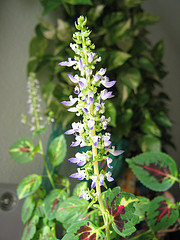
During the 1800s Coleus enjoyed a frenzy of popularity in Victorian England. Wild excitement surrounded the introduction of new varieties complete with auction sales at exorbitant prices. Today, in much the same way, new varieties from sports (coleus frequently produce sports) [2] and hybrids, are sold to nurseries and introduced as the year's new cultivar. Plant swaps from cuttings are continually ongoing in the hope of finding a new sport suitable for sale and/or adding something new to a collection. Coleus does not have an official registry of plant cultivars, which makes identifying them a confusing prospect. Queries for a name for your coleus will yield many answers which depend largely on where it was purchased. Coleus purchased at box stores will often only bear the tag name of "Coleus" thus, finding a cultivar name, is left up to the purchaser. You may be surprised and delighted at some of the whacky and fun names given to these cultivars like 'Brooklyn Horror', 'Dr. Wu', 'Kiwi Herman', 'Bipolar Bigolly', 'Blair’s Witch', 'Fishnet Stockings' and 'Fright Night'. Reading through the cultivars names is a treat in itself. With the increased interest in coleus as a welcome addition to gardens and containers, new societies are forming which may address an official cultivar registry. In addition to the PlantFiles Coleus section, which contains over 600 listings, an exhaustive list of some 1400 coleus cultivars and synonyms can be found at coleusfinder.org.
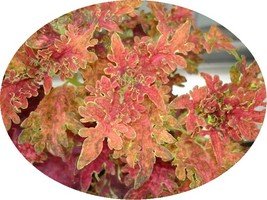
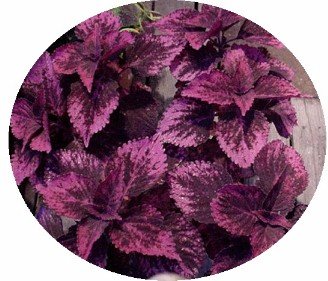
Regardless of their names, the many new cultivars and hybrids available today make Coleus collecting a rewarding and pleasurable pastime. Easy to grow and maintain, it has become the plant of choice for indoor and outdoor gardeners and designers. With the introduction of sun tolerant varieties, this previously shade garden annual has become a contender for focal points in bedding landscapes. No longer considered just an accent plant, a combination of several Coleus make a stunning and colorful grouping.
The variety in color, texture, leaf shape and growing form make each one unique and a worthy candidate for use in the garden or container. Ranging in leaf size from less than an inch ('Thumbelina') to a span of over 8 inches ('Kong' varieties) coleus can be used to great effect in many applications such as borders, groupings, tree bases and to fill in barren spots when other plant material has lost it bloom.
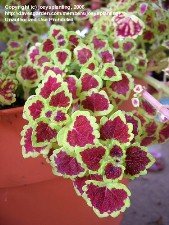
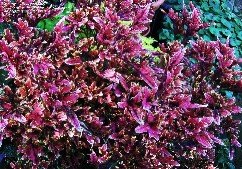
In its Victorian heyday, Coleus was a parlor plant gracing windows or residing in conservatories. By the early 1900s it had fallen out of favor due to unsuccessful overwintering and inferior plants grown from seed. During the 1920s a new introduction was circulated; C. rehneltianus after its collector Herr F. Rehnelt who found a specimen in the ruins of Ceylon which later proved to be the same specimen previously recorded in 1837 which was found growing over tiled roofs in the Philippines. [3] It is the predecessor of our present-day trailing coleus originally used as hanging plants, now also used in outdoor containers and as ground covers. The many and varied cultivars of C. rehneltianus lend themselves to a collection all their own.

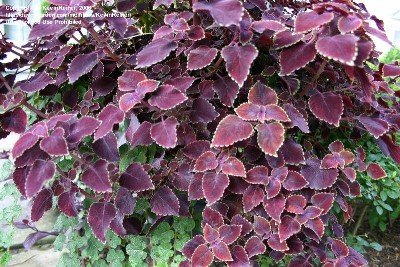
A tropical plant, coleus is grown as an annual in most zones but has some success as a perennial in zone 11. The ideal growing conditions are temperatures above 60 degrees F receiving morning sun and dappled shade. The correct balance of sun or shade depends on the cultivar and experimenting within your growing conditions. Specimens grown from cuttings retain stronger color and do not go to seed as easily. The sun tolerant varieties can endure greater sun exposure and show brighter and deeper coloring. The remarkable color range of the foliage achieves the effect most gardeners look for in flowering specimens yet coleus will remain showy from spring to first frost. With such an outstanding pigment range in its foliage, who needs flowers?
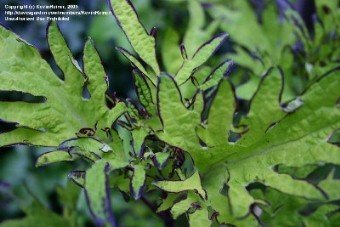
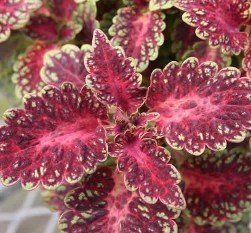
Inexpensive, and easily reproduced from seed or stem cuttings, propagation is even possible from a leaf or tip cutting. Cuttings can be rooted in water, or the recommended mixture of 2 parts peat one part soil and two parts sand or substitute a soiless mix . Today's commercial moisture control mixes work well with coleus cuttings as do peat pots and wedge cubes. Take cuttings in the fall, prior to a killing frost, and grow your Coleus as a house plant to brighten the winter months. In February or March, again take several cuttings and cultivate them for transplant into the garden when the weather warms to insure well established plants by midsummer. The flat of cuttings shown are two to three inches cut below a leaf node.These were dipped in a rooting hormone and put in a moisture retentive soil (Moisturizing Miracle Gro) or just add peat moss to soil, and placed in a shady spot outdoors after danger of frost has passed.
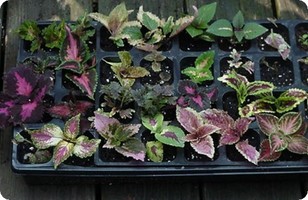
Just like basil plants, you want to keep Coleus from flowering. Gently removing the terminal bud of each shoot when it appears, encourages side branching, producing more beautiful foliage and also controls height. Coleus in the garden should be given at least 12 inches of space in a slightly alkaline soil. Sensitive to fertilizer, all liquids should be diluted down to half or a quarter strength and it has been remarked that fish emulsion works wonders as does bone meal and cow manure which should be fed from March to September. Coleus prefer a moist well drained soil, but do not like "wet feet" and will develop root and stem rot. Usually disease free, Coleus may be prone to mealy bugs, aphids and whitefly.
Testament to the many varieties available today, Coleus growth as a preferred annual plant has certainly taken on a life of its own. Its variations in form: trailing, mounding, spreading or as a topiary add to its versatility of use. In public places, in the garden, or in water on the office window sill, Coleus brightens any area. Need a spot of color? Try a Coleus. But be forewarned, no one can own just one.
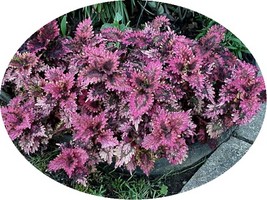
Footnotes:
[1] Encyclopedia Britannica.
http://concise.britanica.com/ebc/article/9361126/coleus
[2] Fuller, Harry J. An Outline Of General Botany. New York. 1947
sport: "Sudden small or large variations of unpredictable nature...caused by changes in chromosomes...mutations develop in seeds or in buds."
hybridization: "involves the crossing of closely related plants in order to bring together...desirable traits possessed separately by the parent plants."
[3] Pedley, W.K. and R. Coleus: A Guide to Cultivation and Identification. Great Britain: John Bartholomew and Son LTD, 1974.
Copyright © www.100flowers.win Botanic Garden All Rights Reserved